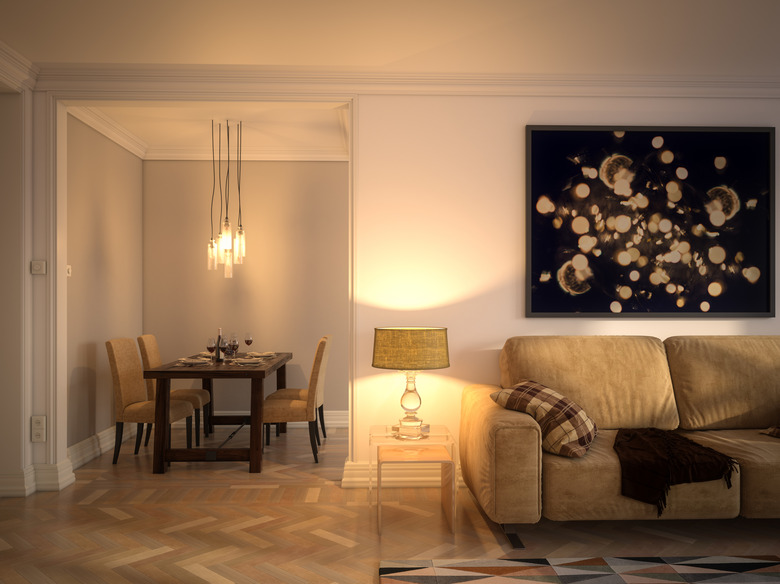Why Are My House Lights Flickering?
Flickering lights can indicate electrical problems ranging in severity from annoying to ominous. Because your lights are powered by your home's electrical system, the cause of flickering may be the lights themselves or it may be an issue with the electrical system as a whole. Diagnoses and solutions range from screwing in a light bulb to reaching out to a professional electrician. Figuring out the severity of the electricity flickering in the house lets you know how to proceed.
Basic Issues With Simple Fixes
Basic Issues With Simple Fixes
If the light from just one fixture flickers, it's most likely an issue with that specific light. Turn the light off and allow it to cool down. Then tighten the bulb or switch out the existing bulb with a fresh one. If you have a compact fluorescent lamp bulb, which is the spiral-shaped, energy-saving type, in a socket connected to a dimmer switch, blinking may occur as these bulbs aren't generally compatible with most types of dimmers.
If the flickering lights continue after replacing the bulb, you may have a wiring issue. It could be the fixture itself or in the electrical wiring leading to the fixture. This issue is no longer a simple fix and instead requires help from a licensed electrician.
Appliance Causing Flickering Lights
Appliance Causing Flickering Lights
Sometimes, starting a large appliance, typically one that draws 100 amps or more, such as a heating or cooling unit or a clothes dryer, may cause your home's lights to flicker. The unit needs a lot of electricity to start up initially with less power needed once it's running, which is why you may notice the flickering at startup and not constantly. In this case, move the appliance to an outlet on a dedicated circuit to remedy the issue.
If heating and cooling appliances cause your lights to flicker every time they start running, contact a certified climate-control technician to install a soft start kit. This addition helps reduce the amount of power needed to start the appliance, which can minimize the flickering effect. Do not neglect power-draw problems, as long-term increased current draw may heat breakers or connectors and eventually lead to a house fire.
Getting Professional Help
Getting Professional Help
Consistent flickering in one or more areas that persists after you change the light bulb may indicate loose wiring. Because a single circuit can reside in places ranging from your junction box to your light switch, and because each circuit may have up to 50 connections, you'll need to enlist the help of a licensed electrician to identify and remedy the fault.
If multiple lights flicker, this may mean you have loose service conductors in your main electrical panel or meter base. This can happen due to normal wear and tear as your conductors heat up and cool down each time you use them. Other causes of flickering lights that call for professional attention include faulty connectors, corroded wiring or a mixture of copper and aluminum wires that haven't been properly connected.
The electrician can narrow down the issue faster if you can provide more information about the electricity flickering in the house. Pay attention to when the flickering happens. Is it at certain times or when something specific happens? Share any information you have regarding when, how and why the flickering happens.
Additional Electrical Issues to Consider
Additional Electrical Issues to Consider
Neglecting wiring or connection issues can increase your chances of a house fire, cause electric shock and compromise safety features such as breakers. If simple troubleshooting doesn't do the trick, don't hesitate to call a licensed electrician.
Electric issues from outside your home may also cause flickering lights. If the wire that connects your home's electrical supply to your power company's transformer is too small, for instance, your lights may flicker. Contact your power company to investigate and address this issue.
